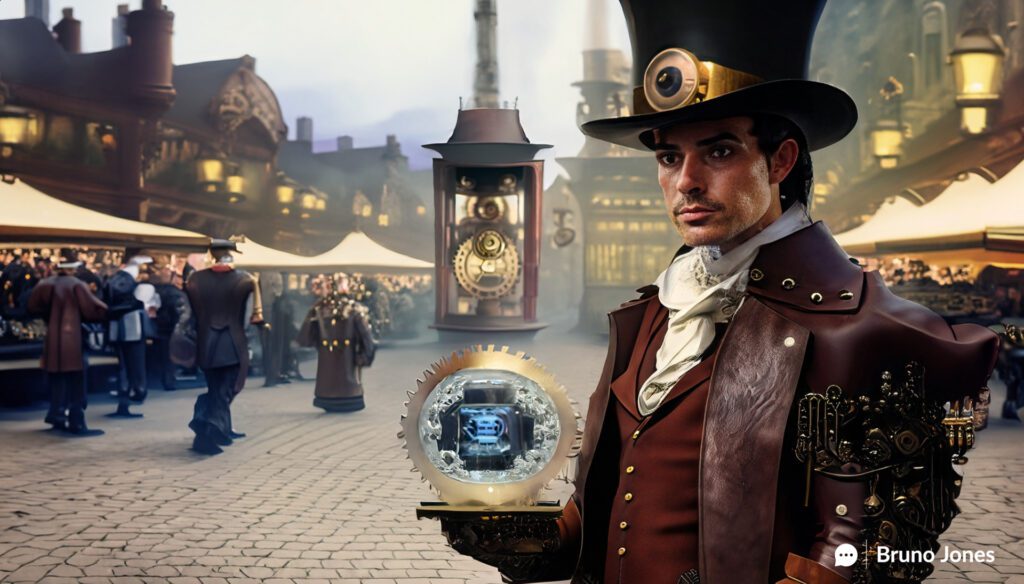Discover the 4 Secrets to Staying Ahead in E-Commerce Trends: Unlocking Your Target Audience’s Potential. In today’s digital landscape, platforms like Facebook, Google, Snapchat, TikTok, YouTube, and LinkedIn offer unprecedented access to your target market. This abundance of options raises a crucial question: why is digital marketing, especially online advertising, so essential for contemporary business growth and staying ahead in e-commerce trends?

Table of Contents
Paid Ads and Traffic Generation
The essence of digital marketing lies in driving traffic to your website. Paid ads play a crucial role in this endeavor, allowing businesses to reach potential customers across various platforms. Whether it’s Facebook’s vast customer base or Google’s intent-based targeting, paid ads provide an opportunity to tap into different demographics and preferences.
The Power of Facebook Advertising
Facebook stands out as a preferred platform for many brands. With its unlimited customer reach and interruption marketing approach, Facebook offers a unique opportunity to acquire customers impulsively. Unlike Google, where ads appear to those already searching for your product, Facebook allows you to interrupt users’ browsing experience, making it an excellent platform for impulse purchases.
Cost-Effective Options with Snapchat and TikTok
Platforms like Snapchat and TikTok offer a cost-effective way to serve a large number of impressions. These platforms cater to a younger audience and require a focus on capturing attention within the first few seconds. The ability to reach people cheaply on these platforms opens doors for brands looking to make an impact without breaking the bank.
YouTube’s Audio Advantage
YouTube’s advertising advantage lies in its audio-enabled user experience. Unlike Facebook, where a majority of users scroll through their feeds with the sound muted, YouTube users are more likely to have the audio on. This feature allows for more engaging ads with voiceovers and sound effects, reaching a broad audience.
Platform Selection and Customer Journey
Choosing the right platform depends on your target audience and the nature of your product. While LinkedIn serves the B2B market, Facebook excels in direct-to-consumer advertising. Understanding the typical customer journey—from seeing an ad to clicking and purchasing—is vital. Product, offer, creatives, website, and ad account strategies contribute to a successful campaign.
The Importance of Facebook in Brand Growth
For many businesses, Facebook is the primary platform for advertising, with clients spending 80 to 90% of their budget there. The platform’s ease of use, longevity, and vast customer base makes it an ideal starting point for brands looking to grow and acquire customers.
Facebook Advertising
Facebook has emerged as a dominant force in the world of digital advertising. Its unique features and vast user base make it a preferred platform for many brands. In this section, we’ll explore why Facebook is so popular, the customer journey on the platform, and the importance of various elements in a successful Facebook advertising campaign.
Why Facebook is a Preferred Platform for Many Brands
- Unlimited Customer Reach: Facebook’s extensive user base offers an unparalleled opportunity to reach potential customers. Its interruption marketing approach allows brands to engage users who aren’t necessarily searching for their products, creating more opportunities for impulse purchases.
- Ease of Use: Facebook’s advertising platform is user-friendly and has been around for a long time, making it accessible for both new and experienced advertisers.
- Cost-Effective: Facebook provides a cost-effective way to reach specific demographics and interests with various ad formats and targeting options.
The Customer Journey on Facebook: From Ad Click to Purchase
- Ad Engagement: The journey begins with an engaging ad that captures the user’s attention. The ad must resonate with the target audience through eye-catching visuals or compelling copy.
- Click and Landing Page: The user is directed to a landing page or product page on the brand’s website once clicked. The transition must be seamless, with consistent messaging and design.
- Conversion Path: The website’s user experience plays a crucial role in converting the click into a purchase. Clear calls to action, easy navigation, and a smooth checkout process are vital for success.
Importance of Product, Offer, Creatives, Website, and Ad Account Strategies
- Product: The product must be appealing and meet the target audience’s needs. Even with excellent marketing, a subpar product will struggle to succeed.
- Offer: Pricing and special offers can significantly impact conversion rates. Testing different price points and incentives can help optimize results.
- Creatives: Images, videos, and ad copy must be carefully crafted to convey the brand’s message and entice users to click.
- Website: The website’s design and functionality are essential for retaining visitors and converting them into customers.
- Ad Account Strategies: Testing different audiences, ad formats, and bidding strategies can help in fine-tuning the campaign for optimal performance.
Budget Allocation and Focusing on Facebook as a Starting Point
- Majority Budget Allocation: Many brands allocate 80 to 90% of their advertising budget to Facebook, reflecting its effectiveness in customer acquisition and brand growth.
- Starting Point for Brands: Facebook’s proven track record makes it an ideal starting point for brands looking to launch or expand their online advertising efforts.
Structuring Facebook Ads
Top of the Funnel, Middle of the Funnel, Bottom of the Funnel, and Retention
- Top of the Funnel: This is where you’ll spend most of your budget, targeting new people who have never engaged with your brand. It’s about reaching out to those who have never liked, commented, shared, or visited your website.
- Middle of the Funnel: These are people who have engaged with your brand, perhaps by watching or liking your content on platforms like Instagram. They have shown interest but haven’t yet made a purchase.
- Bottom of the Funnel: This segment includes people who have visited your website, added items to their cart, or initiated a checkout but haven’t completed the purchase. They are close to buying but need that final push.
- Retention or Loyalty: This is about targeting existing customers, those who have already bought from you. It’s about encouraging repeat purchases and building brand loyalty.
Audience Targeting Strategies for Retargeting Campaigns
- Engagement Targeting: Create audiences based on people who have engaged with your Facebook and Instagram pages or ads. This can be done for specific time frames, such as the last 30, 90, or 365 days.
- Video Viewers Targeting: Target people who have watched your videos, whether it’s 3 seconds, 10 seconds, or more. You can create custom audiences based on the percentage of video watched.
- Website Visitors Targeting: These audiences generally convert well, as they have shown interest by visiting your website. You can retarget them to encourage them to complete a purchase.
- Add to Cart Targeting: Targeting people who have added items to their cart but haven’t purchased can be highly effective, as they have shown strong interest in your products.
- Existing Customers Targeting: Create an audience of people who have purchased from you and show them ads for other products. This strategy helps in cross-selling and up-selling.
Importance of Engagement and Website Visits in Targeting
- Engagement: People who engage with your brand by liking, following, or commenting are more likely to buy. Targeting these engaged users can lead to higher conversion rates.
- Website Visits: Targeting those who have visited your website is crucial, as they are more likely to purchase compared to those who have only engaged with your social media. It’s about moving them down the funnel to the point of purchase.
Building Solid Creative
The success of a digital marketing campaign often hinges on the quality of its creatives. From images to videos, the content must resonate with the audience, convey the message, and prompt action. Here’s a deep dive into the elements that make up strong creatives and how to leverage them effectively.
Elements of Strong Creatives:
- Problems and Pain Points: Addressing your target audience’s problems and pain points is the first step in crafting compelling content. You can position your product as the solution by identifying what your audience struggles with.
- Solutions: Your product or service must be presented as the answer to the problems you’ve highlighted. Explain how it works and why it’s the best option for your audience.
- Benefits: Highlight the advantages of using your product. What makes it unique? How does it improve the user’s life or solve a specific issue?
- Features: Detail the specific characteristics of your product. From ingredients to design, these tangible aspects help the audience understand what they’re getting.
- Social Proof and Authority: Including testimonials, reviews, or endorsements can build trust. If your product has been recognized by experts or has a patent, highlight it.
- Call to Action: Every creative must guide the viewer to the next step, whether it’s visiting a website, signing up for a newsletter, or making a purchase.
Comparison Between Images and Videos in Advertising:
- Images: Images are often easier to create and can convey a message quickly. They can include text, features, benefits, and more. However, they may lack the depth and engagement that videos offer.
- Videos: Videos allow for a more comprehensive storytelling experience. They can include all the elements mentioned above, from problems to solutions, in a more engaging format. Videos can connect with people on a deeper level but may require more time and resources to produce.
Real-World Examples of High-Converting Creatives:
- Children’s Supplement Brand: A video ad addressing the problem of children’s tantrums and lack of focus, introducing a supplement as the solution, highlighting benefits, and featuring customer reviews.
- Pumpkin Spice Night Moisturizer: An image ad showcasing the product, emphasizing its creamy texture and delightful smell, and including a user testimonial.
- Clothing Brand: A split-screen image ad focusing on the fit and comfort of the clothing, with a clear call to action.
- Facebook Ad Library: A resource that allows you to view various ad creatives, providing insights into what works and what doesn’t.
Tips and Tricks: Additional insights and best practices
- Understand Your Audience: Select the right platform based on your target audience. LinkedIn for B2B, Facebook for direct-to-consumer, and YouTube for audio-engaging content.
- Focus on the Customer Journey: Consider the entire customer journey, from seeing an ad to clicking and purchasing. Understand the importance of product, offer, creatives, website, and ad account strategies.
- Test Images vs. Videos: Experiment with both images and videos to see what resonates with your audience. Trends change, and what works today may differ tomorrow.
- Use Social Proof and Authority: Include customer reviews, testimonials, or any authoritative figures to build trust with potential customers.
- Create Engaging Creatives: Your ads should talk about problems, solutions, benefits, and features. Include social proof, authority, and a clear call to action.
Recap: Unlock 4 Secrets to Staying Ahead in E-Commerce Trends – Optimize Your Campaigns Today!
- Paid Ads and Traffic Generation: Utilizing platforms like Facebook, Google, and others to drive traffic and grow sales.
- Platform Selection: Understanding the unique characteristics of platforms like Facebook, YouTube, Snapchat, TikTok, and LinkedIn to target the right audience.
- Creative Strategies: Emphasizing the importance of images, videos, and creative content that resonates with the audience.
- Customer Journey Understanding: Recognizing the different stages of the funnel, from top to bottom, and tailoring strategies accordingly.
- Retargeting Campaigns: Leveraging custom audiences to retarget potential customers and increase conversion rates.
Encouragement to Experiment with Different Platforms, Creative Types, and Targeting Methods
- Experiment with Different Platforms: Don’t be afraid to try new platforms or revisit old ones. Each platform offers unique opportunities to connect with different segments of your audience.
- Explore Creative Types: Whether it’s images, videos, or a combination of both, experimenting with various creative types can lead to unexpected successes.
- Play with Targeting Methods: From lookalike audiences to interest targeting, experimenting with different methods can help you find the sweet spot for your campaigns.
Final Thoughts on Staying Up-to-Date with Trends and Continuously Optimizing Campaigns
In the fast-paced world of digital marketing, staying up-to-date with trends and continuously optimizing campaigns is not just a recommendation; it’s a necessity. Regularly monitoring performance, adapting to changes, and being willing to pivot when necessary will keep your campaigns fresh and effective.
Remember, there’s no one-size-fits-all approach. The key to success lies in understanding your audience, being flexible, and never settling for the status quo. Embrace the ever-changing nature of the digital landscape, and don’t be afraid to take risks. The future of your brand’s growth lies in your willingness to innovate, adapt, and evolve.
If you find yourself intrigued by the world of digital marketing and feel a spark of curiosity about how these strategies could benefit your business, I’m here to chat. No obligations, no pressure—just a friendly conversation about your goals and how we might achieve them together. Feel free to reach out whenever you’re ready. Your success story could be just a conversation away.
About Bruno Jones:
Bruno Jones, based in Denver, is a seasoned digital marketing expert with over 20 years of experience. He’s renowned for his expertise in enhancing online brand presence, particularly for companies in Colorado and Utah. His educational background in electrical engineering and a transformative approach to digital marketing from Columbia Business School have shaped his unique strategy, merging technical know-how with creative flair.
Bruno excels in harnessing consumer psychology and game theory to craft compelling digital narratives. His blog is a treasure trove of advanced SEO, social media, email marketing insights, and more, catering to both industry professionals and enthusiasts. Each of his posts showcases his knack for simplifying complex ideas into practical, outcome-oriented tactics, cementing his status as a pioneer in digital marketing innovation.



